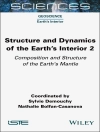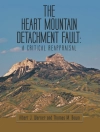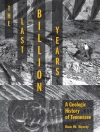The International Year of Planet Earth (IYPE) was established as a means of raising worldwide public and political awareness of the vast, though frequently under-used, potential the Earth Sciences possess for improving the quality of life of the peoples of the world and safeguarding Earth’s rich and diverse environments. The International Year project was jointly initiated in 2000 by the International Union of Geological Sciences (IUGS) and the Earth Science Division of the United Nations Educational, Scienti?c and Cultural Organisation (UNESCO). IUGS, which is a Non-Governmental Organisation, and UNESCO, an Inter-Governmental Orga- sation, already shared a long record of productive cooperation in the natural sciences and their application to societal problems, including the International Geoscience Programme (IGCP) now in its fourth decade. With its main goals of raising public awareness of, and enhancing research in the Earth sciences on a global scale in both the developed and less-developed countries of the world, two operational programmes were demanded. In 2002 and 2003, the Series Editors together with Dr. Ted Nield and Dr. Henk Schalke (all four being core members of the Management Team at that time) drew up outlines of a Science and an Outreach Programme. In 2005, following the UN proclamation of 2008 as the United Nations International Year of Planet Earth, the “Year” grew into a triennium (2007–2009).
Cuprins
The IYPE Hazards Theme: Minimising Risk, Maximising Awareness.- The Hazards Theme of the International Year of Planet Earth.- Social Science Perspectives on Hazards and Vulnerability Science.- Focusing on the Environment and Human Security Nexus.- Communicating Geological Hazards: Educating, Training and Assisting Geoscientists in Communication Skills.- The Response of the International Scientific Community.- of a New International Research Program: Integrated Research on Disaster Risk – The Challenge of Natural and Human-Induced Environmental Hazards.- Building a University Network for Disaster Risk Reduction in sub-Saharan Africa.- Co-operation Plan on Hazards & Disasters Risk Reduction in Asia and the Pacific.- Geophysical Risk and Sustainability: Climate and Climate Change.- Closing the Gap Between Science and Practice to Reduce Human Losses in Hydro-Meteorological Disasters.- The Role of Geosciences in the Mitigation of Natural Disasters: Five Case Studies.- Geophysical Risk and Sustainability: Theory and Practice.- Seismic Hazard in India – Practical Aspects and Initiatives During IYPE.- Computational Geodynamics as a Component of Comprehensive Seismic Hazards Analysis.- Hazards in the Coastal Zones Related to Groundwater–Seawater Interaction Processes.- Geo Hazards and Risks – Observation and Assessment.- Mega Tsunami of the World Oceans: Chevron Dune Formation, Micro-Ejecta, and Rapid Climate Change as the Evidence of Recent Oceanic Bolide Impacts.- Understanding Slow Deformation Before Dynamic Failure.- Landslides in Mountain Regions: Hazards, Resources and Information.












